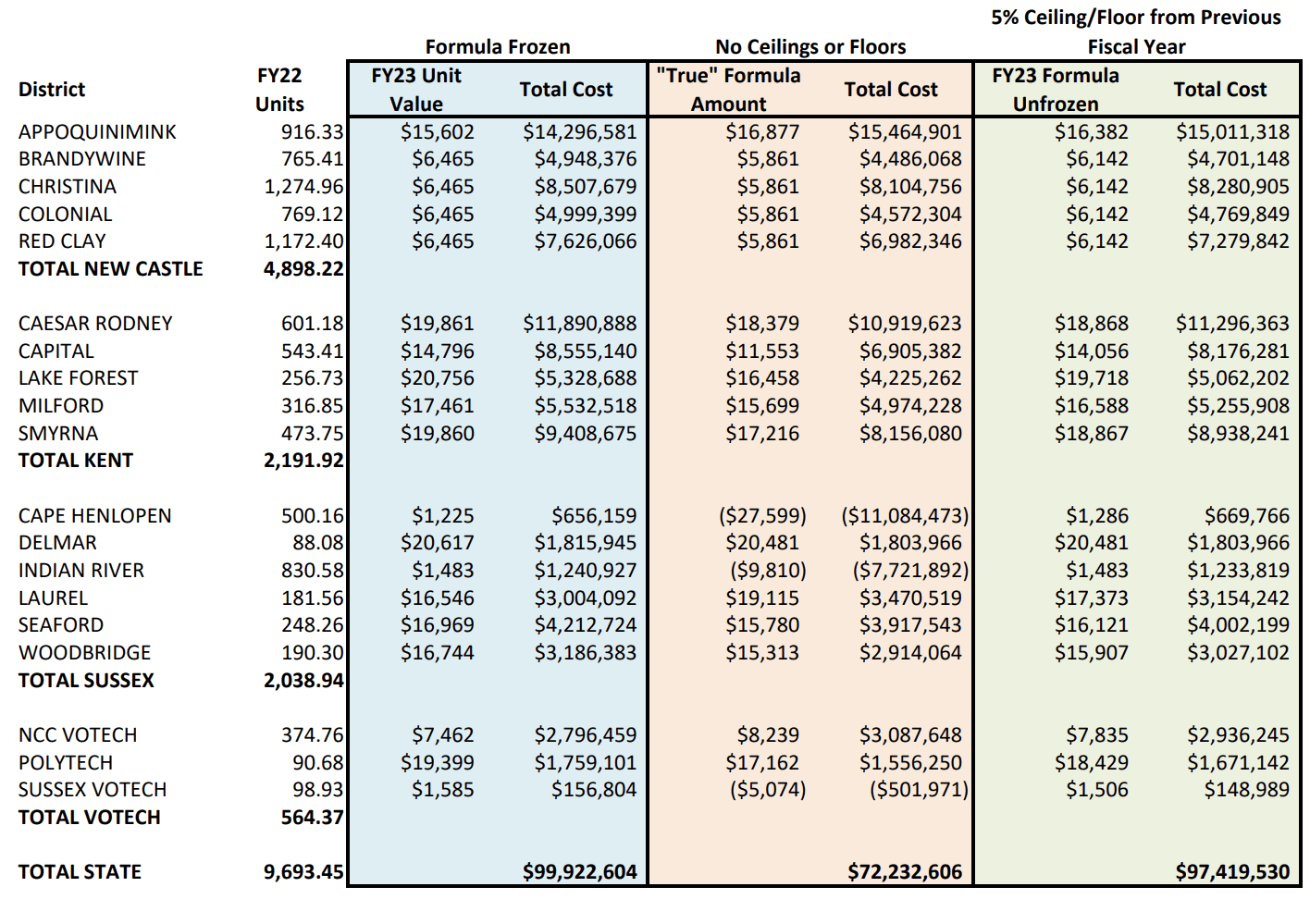Delaware’s Equalization Committee has agreed to not make any decisions on whether to freeze or change the state’s equalization formula, which affects school funding, until next year.
The purpose of the equalization formula is to allocate state resources to districts inversely based on their ability to raise revenues through their local property tax base.
“It’s to try to help those districts that did not have the same property wealth as others,” said Sara Croce, chief financial officer at Milford School District and a member of the Equalization Committee.
“If they didn’t have the ability to raise as much money through current expense referendums, and so forth to support student needs, the equalization formula adjusts for that,” Croce said.
Delaware funds schools based on the number of student “units” in the state’s districts each year.
Every unit is supposed to cover the financial needs of schooling one student, whether that be hiring teachers or installing a repairing HVAC systems.
Once the amount of units are determined the equalization formula adjusts the amount of funding by a percentage that is indicative of the district’s ability to raise funds through referendums.
This helps ensure that each district has the same level of resources to educate each student.
The formula has been frozen since 2009 due in part to outdated property values, which is a factor in the formula.

The amount of state funding for each district. The blue column shows the current funding, with the formula frozen. The tan column shows the true funding with the equalization, without the 5% minimum and maximum adjustment, and the green column is the equalized funding with the 5% adjustment threshold.
“The state recognized that the lack of property reassessment was challenging to districts because you had those districts that were still considered high in poverty continuing to get equalization money based on old property values,” Croce said.
Districts were coming to the table each year and some were losing money and some were gaining money, Croce said, based on property values that were outdated, so the state ended up freezing the formula claiming that there’s too much fluctuation in the formula each year.
In 2020, a ruling by the Delaware Chancery Court found that the property taxing systems in each of the State’s three counties to be unconstitutional. Since then, each county has started the process of reassessment.
According to committee member Jennifer Carlson, who is director of finance at the Department of Education, Kent County should have their property reassessments completed and tax bills released first, in Aug. 2024. She said New Castle and Kent counties both expect the process to be done in July, 2025.
RELATED: State to unveil new math program to combat low scores
Many on the committee argued that they shouldn’t waste all the hours needed to construct a new equalization formula if the completion of property reassessments is just around the corner.
Rep. Ruth Briggs King, R-Georgetown, a member of the House Education Committee, said there should be some more urgency with coming up with a new formula, and the state doesn’t have to wait until the reassessments are done.
“What they’re telling us about reassessment is that it will virtually result in the same values, and a third will go up, a third will go down and a third will stay the same,” she said. “So show me some numbers and let me see something rather than just the same thing that I’ve heard since 2009.”
Even if there is no substantial change to the formula, Briggs King said taking a look at it and trying to find areas to tweak it for improvements is better than doing nothing for the past 13 years.

Raised in Doylestown, Pennsylvania, Jarek earned a B.A. in journalism and a B.A. in political science from Temple University in 2021. After running CNN’s Michael Smerconish’s YouTube channel, Jarek became a reporter for the Bucks County Herald before joining Delaware LIVE News.
Jarek can be reached by email at [email protected] or by phone at (215) 450-9982. Follow him on Twitter @jarekrutz
Share this Post





